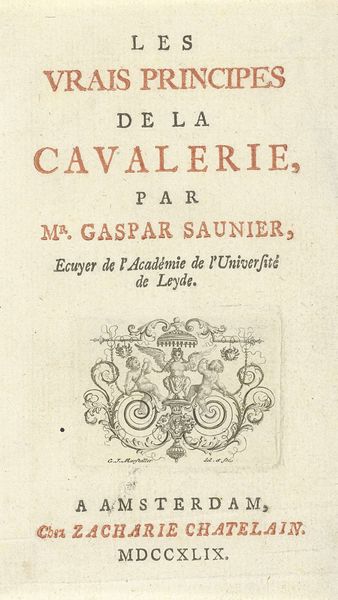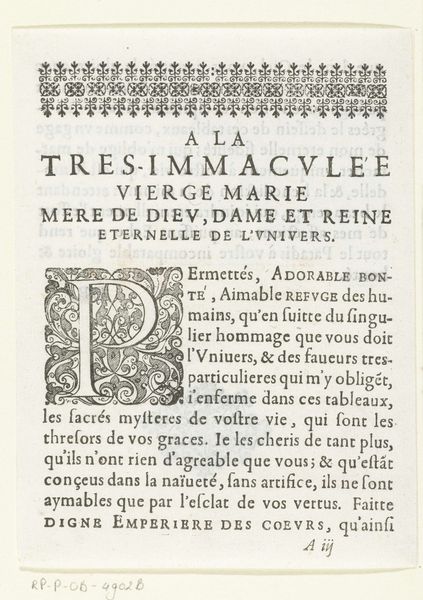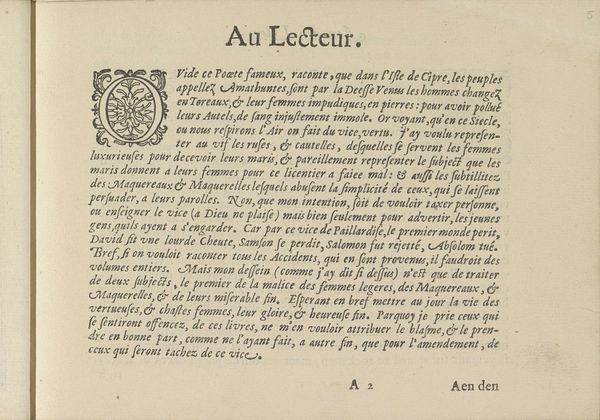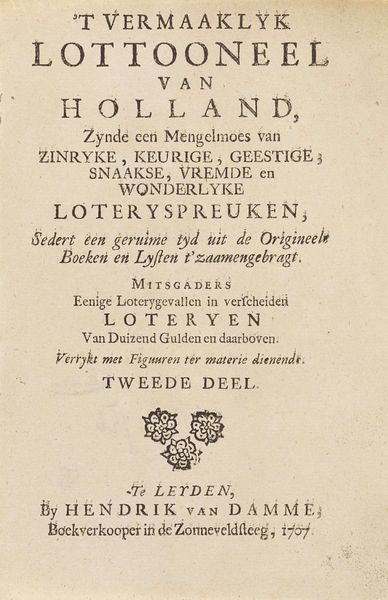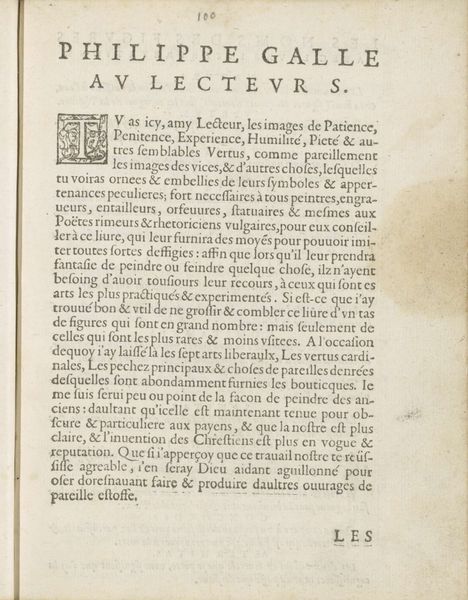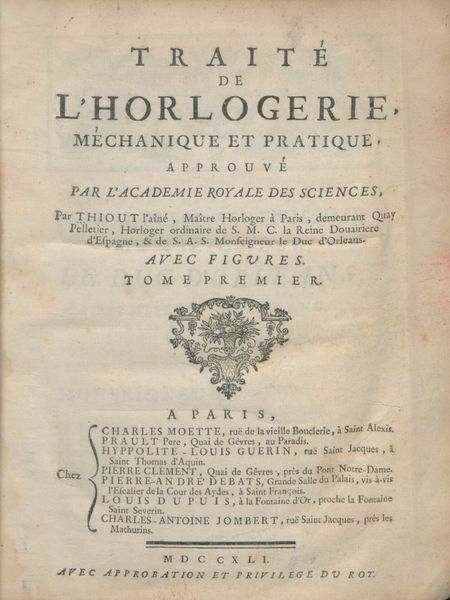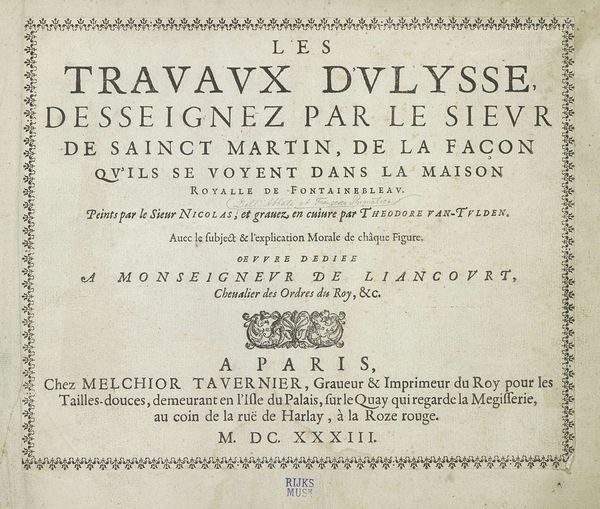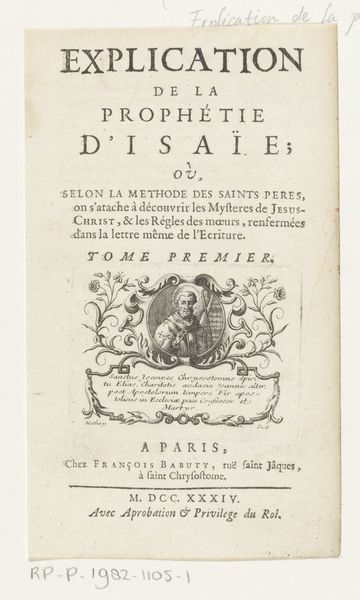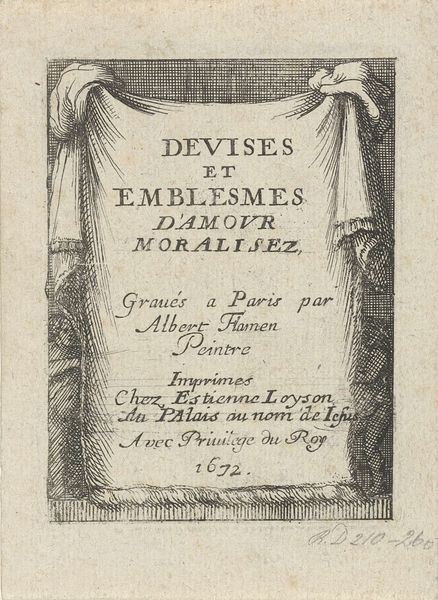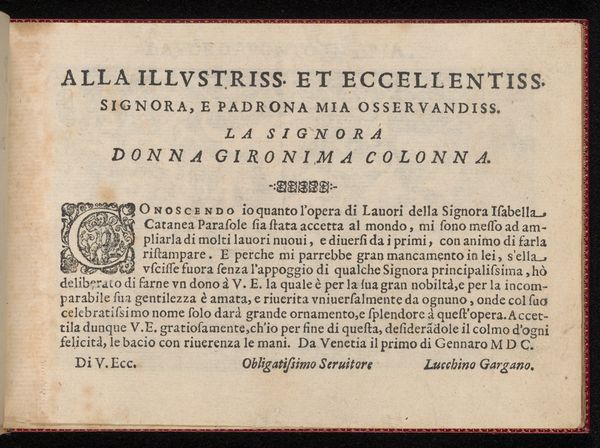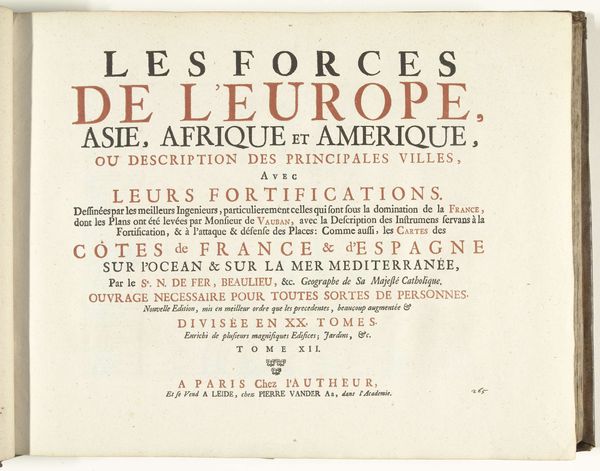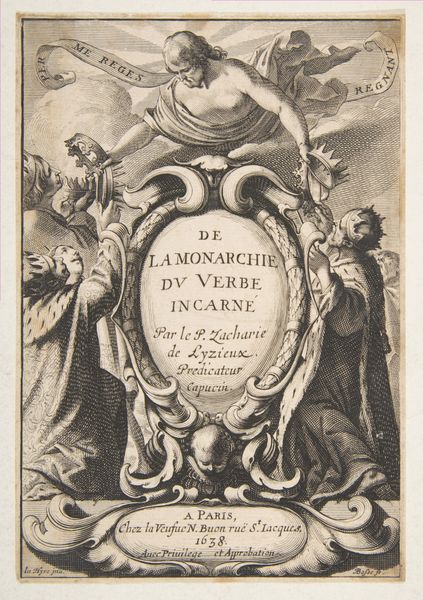
Ongeïllustreerd titelblad voor de embleemserie 'Kloosterleven in emblemen' 1646
0:00
0:00
graphic-art, print, textile, typography, poster, engraving
#
script typeface
#
graphic-art
#
hand-lettering
#
baroque
# print
#
old engraving style
#
hand drawn type
#
hand lettering
#
textile
#
mannerism
#
typography
#
thick font
#
handwritten font
#
golden font
#
poster
#
engraving
#
historical font
#
calligraphy
#
small lettering
Dimensions: height 163 mm, width 115 mm
Copyright: Rijks Museum: Open Domain
Editor: We're looking at the title page of 'Kloosterleven in emblemen,' or 'Cloister Life in Emblems,' from 1646. It’s an engraving by François Langlois. I find it interesting that the text is the art itself. How do you interpret this work as more than just a label? Curator: It is an intriguing piece, isn't it? Think of this engraving as a symbolic doorway. The lettering isn't just informative; it's evocative. Notice how the weight and style of the font shifts to guide our eye, like an architectural blueprint hinting at the series' exploration of monastic life. The 'Lvx Clavstri,' the 'Light of the Cloister,' what does that evoke in you? Editor: The contrast of light and darkness, a sense of enlightenment found within the secluded walls. But also perhaps a play on knowledge, illuminating the mysteries of faith. Curator: Precisely! And look at the symmetrical ornament. In what ways might its organized forms connect to monastic ideals of structure and order, and also contain it? Editor: It mirrors the disciplined life within a monastery, but at the same time its stylized quality suggests an artificiality to such stringent order. It seems contradictory. Curator: The artist creates an entire world using typography, a memory palace filled with the potential for profound contemplation. Its success depended on the shared understanding of these symbols. It begs the question, what symbols would we choose today? Editor: I hadn't considered how much these images relied on a shared visual vocabulary. Now I realize how much I've learned! Curator: And, I’m reminded how emblems encapsulate layers of meaning through visual language. It makes you question our own symbolic languages.
Comments
No comments
Be the first to comment and join the conversation on the ultimate creative platform.
